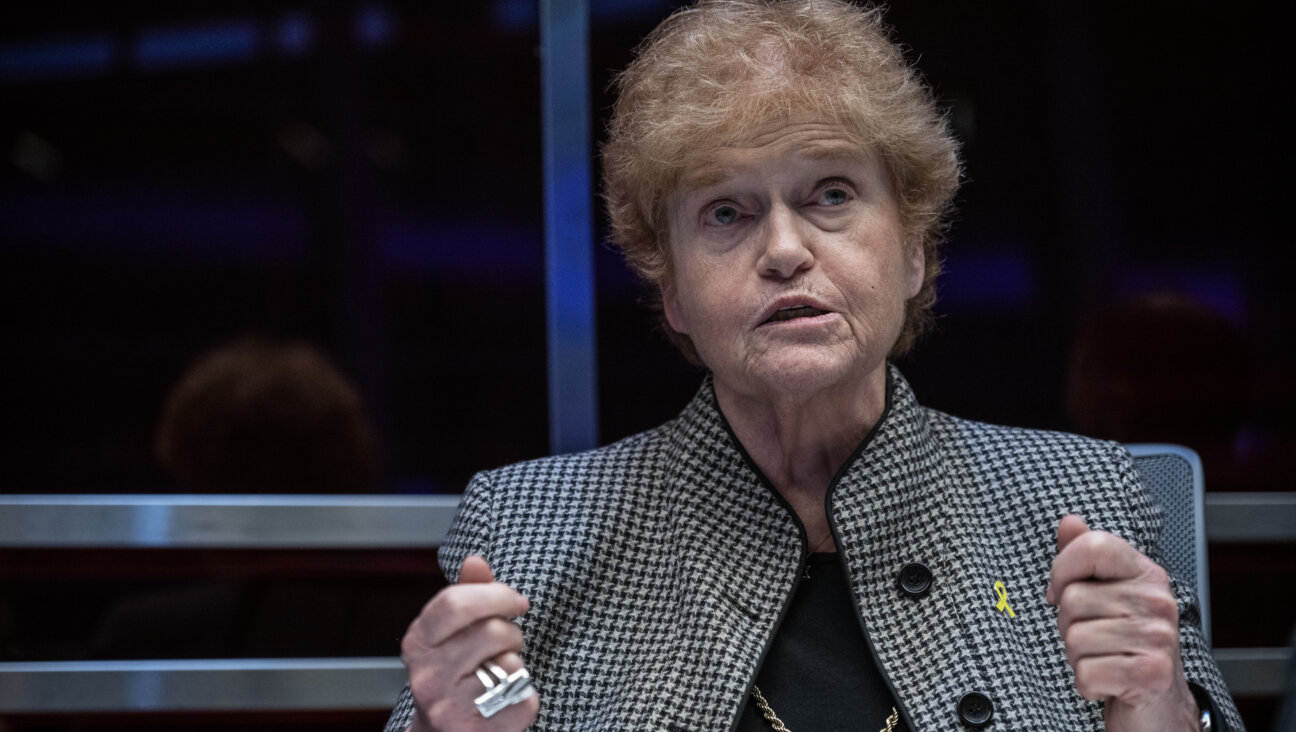Orthodox See ‘Youth Advantage’
While the Reform and Conservative religious movements have long jockeyed for the title of the largest Jewish denomination in America, a new study finds that when it comes to the next generation, the Orthodox movement has the most children affiliated with its synagogues, setting the stage for a future shift in the balance of American Jewish power.
According to the report, which is set to be released next week by the network of Synagogue 3000, a Los Angeles-based not-for-profit that is not affiliated with any denomination, a quarter of all Jewish children are affiliated with Orthodox synagogues, a figure that is higher than the number affiliated with the other two synagogue movements and much higher than the 10% at which the Orthodox movement is generally counted. A separate survey released this week by the American Jewish Committee found that only 8% of American Jewish respondents identified as Orthodox.
“Non-Orthodox Jews ought to think about their relation to the Orthodox,” said Steven M. Cohen, the study’s author and a research professor at Hebrew Union College-Jewish Institute of Religion, the flagship institution of Reform Judaism. “The growing number of Orthodox Jews means they will play a much more central role in defining American Jewry in the years to come.”
The new report puts particular emphasis on the figures relating to Jewish children. While only 43% of adults are affiliated with a synagogue, the number is 68% when it comes to Jews under the age of 18, according to Cohen’s computations. Of those young affiliated Jews, 37%, or 224,000, are with Orthodox synagogues. The number is 195,000 for the Reform and 147,000 for the Conservatives.
In addition to shedding light on Orthodoxy’s youth advantage, the report underscores sharp differences between the demographics of the Reform and Conservative movements, which are often lumped together. According to the report, the Reform movement is made up mostly of middle-aged parents with children, while the Conservative movement is dominated by an aging population with fewer children.
The new picture is due in part to an obscure methodological difference that has a big impact on the numbers. While many studies look at which denomination people identify with, the new study emphasizes the number who actually belong to a synagogue — a count that lowers the percentage associated with the Reform and Conservative movements and raises the percentage of those aligned with Orthodoxy. Cohen said that synagogue membership should be the more central consideration.
The science of measuring the relative size of the Jewish denominations is a difficult act because of the way that people move in and out of synagogues over the course of their lives and because of the difficulty in extrapolating from one respondent’s behavior to the behaviors of an entire household. But Gary Tobin, a demographer and president of the Institute for Jewish & Community Research, said that synagogue membership is a powerful indicator of the respective strengths of the different movements. “You’re better off comparing what people do than what they say,” Tobin said.
As for the larger findings, Tobin said, “there’s no question that Orthodoxy is witnessing ascendancy in Jewish life.”
Cohen drew the numbers for his study from the 2000-2001 National Jewish Population Survey, and as such it is an underscoring of figures that were overlooked or underplayed when that study first came out. The 2000-2001 survey, funded by United Jewish Communities, was criticized for undercounting the total number of Jews in America but was given more credit for its portrayal of the internal dynamics of the American Jewish community.
Cohen put together the report for Synagogue 3000. The network has been involved in recent discussions about whether Jews are moving to a post-denominational period when the streams cease to matter. The co-founder of Synagogue 3000, Rabbi Lawrence Hoffman, said that the sharp distinctions evident in Cohen’s study indicate that post-denominationalism is a “myth” and that denominations are still very important.
“The thing that sort of surprised me was what I would call the ‘sectorization’ of Jews — and the need for specific synagogues all along the spectrum,” Hoffman said. The stereotypical picture of non-Orthodox synagogues is that they are crowded with families that have kids preparing for their bar or bat mitzvah — families that then drop out. The report says that this picture holds up in the case of the Reform movement. Only 21% of Reform members are older than 65, and few families stay on as members after their children turn 13.
The Conservative movement, on the other hand, appears to keep a few more families after the children reach bar mitzvah age, but the bad news is that it is attracting fewer new young families. More than half the Conservative members are older than 45 and have no children. Cohen also points out that in addition to aging, the Conservative movement is threatened with the loss of its most educated and knowledgeable constituents to the Orthodox community.
“We have evidence of a Jewish brain drain from Conservatism to Orthodoxy, which strengthens Orthodoxy and weakens Conservatism,” Cohen said.
A message from our Publisher & CEO Rachel Fishman Feddersen

I hope you appreciated this article. Before you go, I’d like to ask you to please support the Forward’s award-winning, nonprofit journalism so that we can be prepared for whatever news 2025 brings.
At a time when other newsrooms are closing or cutting back, the Forward has removed its paywall and invested additional resources to report on the ground from Israel and around the U.S. on the impact of the war, rising antisemitism and polarized discourse.
Readers like you make it all possible. Support our work by becoming a Forward Member and connect with our journalism and your community.
— Rachel Fishman Feddersen, Publisher and CEO






















